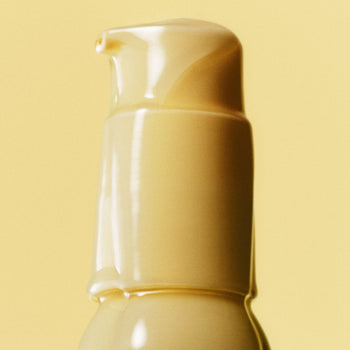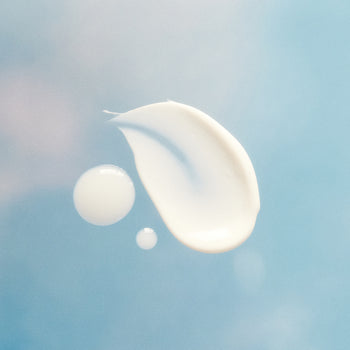Sunscreener
Sunscreen is the most important skincare step, so let’s make it less scary.
Enter your sunscreen’s ingredient list below, and we’ll give you a factual, not fear-based, analysis on what's really inside.
The results are in! Your product has chemical and mineral UV filters. It's what the industry likes to call a "hybrid" sunscreen.
A reminder that the safest sunscreen is the one you use daily and, if you're outside for extended periods, wear protective clothing, seek shade, and avoid being in direct sunlight during peak UV hours.
Without further adieux, here's a breakdown of what's in your sunscreen. Click on the identified ingredients below to learn more about them:
The results are in! Your product has mineral UV filters.
A reminder that the safest sunscreen is the one you use daily and, if you're outside for extended periods, wear protective clothing, seek shade, and avoid being in direct sunlight during peak UV hours.
Without further adieux, here's a breakdown of what's in your sunscreen. Click on the identified ingredients below to learn more about them:
The results are in! Your product has chemical UV filters.
A reminder that the safest sunscreen is the one you use daily and, if you're outside for extended periods, wear protective clothing, seek shade, and avoid being in direct sunlight during peak UV hours.
Without further adieux, here's a breakdown of what's in your sunscreen. Click on the identified ingredients below to learn more about them:
The results are in! Your product has chemical and mineral UV filters (what the industry likes to call a "hybrid" sunscreen) + boosters that are structurally similar to chemical sunscreen.
A reminder that the safest sunscreen is the one you use daily and, if you're outside for extended periods, wear protective clothing, seek shade, and avoid being in direct sunlight during peak UV hours.
Without further adieux, here's a breakdown of what's in your sunscreen. Click on the identified ingredients below to learn more about them:
The results are in! Your product has mineral UV filters + boosters that are structurally similar to chemical sunscreen.
A reminder that the safest sunscreen is the one you use daily and, if you're outside for extended periods, wear protective clothing, seek shade, and avoid being in direct sunlight during peak UV hours.
Without further adieux, here's a breakdown of what's in your sunscreen. Click on the identified ingredients below to learn more about them:
The results are in! Your product has chemical UV filters + boosters that are structurally similar to chemical sunscreen.
A reminder that the safest sunscreen is the one you use daily and, if you're outside for extended periods, wear protective clothing, seek shade, and avoid being in direct sunlight during peak UV hours.
Without further adieux, here's a breakdown of what's in your sunscreen. Click on the identified ingredients below to learn more about them:
We need more information!
The ingredient list you provided doesn't have any sunscreens actives that we can detect. Be sure that you copied and pasted the entire ingredient list (including active ingredients if they are listed separately) and that all ingredients are separated by commas.
If you've done all of that, you may have a product that isn't confirmed to be UV protective on your skin.
In the United States, you can verify your sunscreen is a true sunscreen by seeing if it's registered here: https://dps.fda.gov/ndc
Active UV Filters
UV Boosters
Inactive Ingredients
[[ selectedItem.matched_name ]]
×This UV Filter is [[ selectedItem.data?.approved_in_us ? 'approved' : 'not approved' ]] for use in U.S.-made sunscreen formulations[[ selectedItem.data?.max_threshold_us_num ? ' at a ' + selectedItem.data.max_threshold_us_num + ' maximum formulation percentage' : '' ]].
This UV Filter is approved for use in EU-made sunscreen formulations[[ selectedItem.data?.max_threshold_eu_num ? ' at a ' + selectedItem.data.max_threshold_eu_num + ' maximum formulation percentage' : '' ]].
This Filter
The Glossary
What makes up a sunscreen formula.
Active Ingredients
Also known as UV filters, these are the ingredients that shield your skin from UV rays by absorbing radiation. Some filters protect against UVB (burning) rays, others against UVA (aging) rays, both of which can contribute to cancer. Some filters protect against both types of radiation, meaning they provide broad-spectrum protection.
UV filters fall into one of two categories:
- Mineral (physical)—zinc oxide and titanium dioxide
- Chemical—like avobenzone and octocrylene
More on filters in the Types of UV Filters section.
boosters
These are considered inactive ingredients that MAY increase the efficiency and/or efficacy of the actual UV filters in a sunscreen formula. Boosters are not in all sunscreen formulas, but if you see them in yours, here's a bit more about them...
While some boosters work by increasing uniformity of application or by providing antioxidant (formula stabilizing) capabilities, some boosters do absorb UV radiation, which increases the SPF value. Are they always used for boosting UV protection in a sunscreen formula? No. But when used in higher percentages, they can start doing the heavy lifting.
A really important note: As stated before, technically boosters are considered inactive ingredients in sunscreen formulas, but for the purposes of this checker, we separated them from inactive ingredients to provide more info on what some boosters are and their functions and purposes in a sunscreen formula.
Inactive Ingredients
Inactive ingredients are basically everything else in a sunscreen formula, from texture enhancers to preservatives.
These ingredients don't contribute to sun protection but affect the feel, finish, and wear of a final sunscreen formula.
A really important note: Boosters are technically considered inactive ingredients in sunscreen formulas. But for this checker, we separated out boosters from inactive ingredients to provide more info on what boosters are and their functions and purposes in a sunscreen formula.
The categories of active ingredients (AKA UV filters) that make sunscreen work.
Mineral Filters
Also known as physical or inorganic UV filters, mineral-based UV filters protect your skin from sun damage by absorbing UV radiation. While there’s a pervasive myth that mineral sunscreens “reflect” UV rays, this has been debunked. Zinc oxide and titanium dioxide, the only two approved mineral filters, work largely the same way as chemical filters: they absorb about 95% of UV rays and reflect only around 5%, as confirmed by a 2016 study (source).
So, like chemical filters, mineral filters absorb harmful UV radiation and release it as a small amount of heat, stopping the damage before it hits your skin. This prevents UV rays from penetrating deeper into the skin and causing DNA mutations, sunburn, long-term damage, hyperpigmentation, and more. Mineral filters tend to leave a white cast, making it difficult to formulate elegant sunscreens that blend well on more melanated complexions.
An important note: While mineral filters are the only UV filters currently classified as GRASE (Generally Recognized As Safe and Effective) by the FDA, that doesn’t mean chemical filters are unsafe. Content that tells you otherwise is misinformation and dangerous as it promotes conspiratorial thinking (more thoughts on this topic here).
Bottom line: The safest sunscreen is the one you use daily and generously. Always choose one with SPF 30 or higher and broad-spectrum protection.
Examples: Zinc Oxide, Titanium Dioxide (that's all of them)
Chemical Filters
Also known as organic filters, these filters are made up of organic (carbon-based) compounds that protect your skin by absorbing UV radiation, very similar to how mineral filters work.
Rather than UV rays damaging your skin, that energy is absorbed by the chemical filter, converted into a tiny amount of heat, stopping the damage before it hits your skin. This prevents UV rays from penetrating deeper into the skin and causing DNA mutations, sunburn, long-term damage, hyperpigmentation, and more.
Different chemical filters protect against different types of UV rays, so it's important to use a well-formulated sunscreen that provides broad-spectrum protection (AKA protection from both UVA and UVB rays).
An important note: While mineral filters (zinc oxide and titanium dioxide) are the only two UV filters currently classified as GRASE (Generally Recognized As Safe and Effective) by the FDA, that doesn’t mean chemical filters are unsafe. Content that tells you otherwise is misinformation and dangerous as it promotes conspiratorial thinking (more thoughts on this topic here).
Bottom line: The safest sunscreen is the one you use daily and generously. Always choose one with SPF 30 or higher and broad-spectrum protection.
Examples: Avobenzone, Octocrylene, Homosalate
Radiation from the sun that causes skin damage, premature aging, and increases risk of skin cancer.
Type of Radiation
UVB
Wavelength
280–315
Definition
Short-wave ultraviolet light that causes sunburn, plays a major role in skin cancer, and contributes to photoaging.
Type of Radiation
UVA II
Wavelength
315-340
Definition
The shorter half of the UVA spectrum. Penetrates skin more deeply than UVB and contributes to DNA damage and aging.
Type of Radiation
UVA I
Wavelength
340-400
Definition
The longer part of the UVA spectrum. Penetrates deeper into the dermis than UVA II and plays a large role in photoaging and pigmentation.
Type of Radiation
HEV
Wavelength
400-500
Definition
AKA blue light. Comes from the sun, and a small amount comes from digital screens (not enough to cause damage). May contribute to pigmentation and oxidative stress.


Thinking About
A
Sunscreen? So Are We.
A sunscreen of our very own is in the works. Even thought it's a long ways away, your voice can shape it. Join the waitlist and share your wishlist.
By submitting this form, you agree to receive marketing-related emails from Dieux Skin at the email address provided. By signing up via text, you agree to receive recurring automated promotional and personalized marketing text messages (e.g. cart reminders) from Dieux Skin at the cell number used when signing up. Consent is not a condition of any purchase. Reply HELP for help and STOP to cancel. Msg frequency varies. Msg and data rates may apply. View Terms & Privacy.
FAQ
-
-
My tinted moisturizer has SPF in it… can it replace my current daily sunscreen?
It depends! While lots of skin tints on the market now feature SPF, it’s challenging to get the required ¼ of a teaspoon on your face without a tint looking cakey. It’s possible, but it’s something to be aware of.
We recommend using a sunscreen with SPF 30 (minimum) and with broad-spectrum protection. If you can’t get enough of your tinted sunscreen on your face to get the stated protection on the bottle (if you use less, you risk getting less protection), layer underneath a sunscreen with similar filters. -
Are there any UV filters or boosters that can clog pores? Which sunscreen is best for acne-prone skin?
If you’re allergic to UV filters, you may get a reaction, but the ingredients themselves are unlikely to “clog pores.” Looking at textures and the full ingredient list is a great way to determine if something will break you out. If richer creams tend to be a no-no for you, a thick, rich mineral or chemical sunscreen might not be the best option.
-
I have sensitive skin. Which sunscreen is best for me?
People have allergies to mineral and chemical sunscreens, so it’s important to observe how your skin reacts, and we always recommend patch testing formulas before incorporating them into your routine. If you’re allergic to chemical sunscreens, you may have an allergic reaction to boosters in mineral formulas.
-
How should I choose between chemical, mineral, and hybrid sunscreen? Which one is “the best”?
As long as your sunscreen is broad spectrum (meaning it protects from both UVA and UVB radiation), at least 30 SPF, and is applied regularly, there is no wrong answer here. It’ll all come down to personal preference!
-
Why doesn’t this sunscreen checker consider the potential environmental effects (i.e: coral reef safety) of each formula or filter?
From this article on the Guardian, we agree with renowned reef scientist Terry Hughes:
“The three main threats to coral reefs are global warming, overfishing and coastal water pollution,” says Prof Terry Hughes, former director of the Australian Research Council Centre of Excellence for Coral Reef Studies at Queensland’s James Cook University, and one of the world’s leading coral reef experts. “Coral bleaching is triggered by rising temperatures due primarily to burning fossil fuels. We have already seen three global-scale coral bleaching events due to record-breaking heatwaves, in 1998, 2010 and 2015–2016, which affected 50-70% of tropical reefs. Even the most remote reefs, far from mass tourism or sunscreen, are affected by global warming. There is no scientific evidence that use of sunscreens by people has a harmful effect on coral reefs.”
The studies looking at coral reefs used extremely high levels of chemical sunscreen filters to bleach reefs. When you put high levels of zinc next to reefs, they also bleach reefs. Dr. Michelle Wong has many posts dispelling this harmful myth that uses fear (and your good nature) to sell you sunscreen.
It’s a more robust question, and “reef safe” sunscreen doesn’t mean much. If you’re wondering why certain regions ban certain filters, politicians aren’t scientists and they don’t always listen to experts. If you are swimming near coral reefs, our recommendation is to wear wetsuits and protective clothing if you’re concerned!
-
Where did you get this information?
Using FDA and European sunscreen databases as the backbone of our sunscreen research, this tool was created by our co-founder and Chief Brand Officer Charlotte Palermino and reviewed by our two internal chemists: co-founder and Chief Product Officer Joyce de Lemos and Dieux’s formulation and product development manager Becca Perry.
Becca’s experience is in sunscreen development, having worked on formulas at a renowned contract manufacturer, which helped inform our explanations and how we approach education around boosters. This database was then reviewed by cosmetic chemist, PhD student researcher, and content creator/educator, Ava Perkins.
This tool is made and maintained by humans, not AI (a reminder, AI has hallucinations), with individual sources used to further inform ingredient education. If you think we've missed something, please reach out to SUNSCREENER@dieuxskin.com.
-












